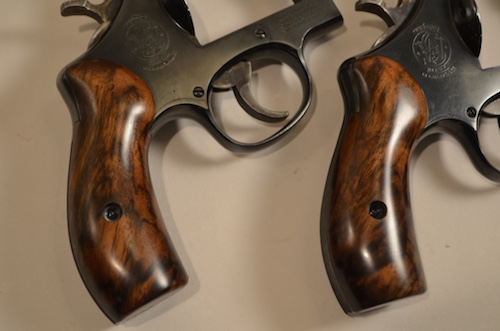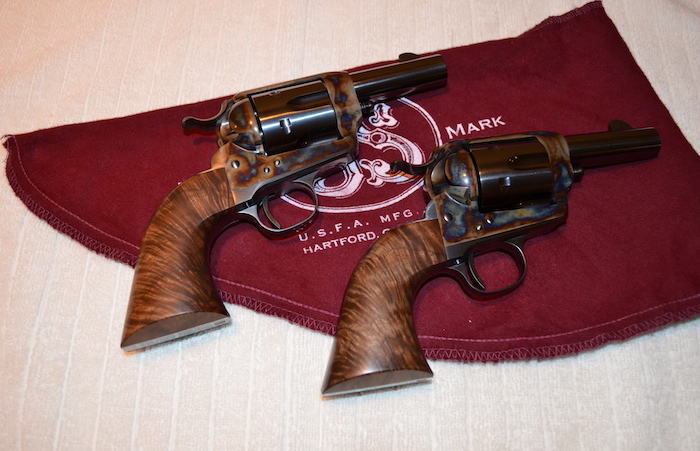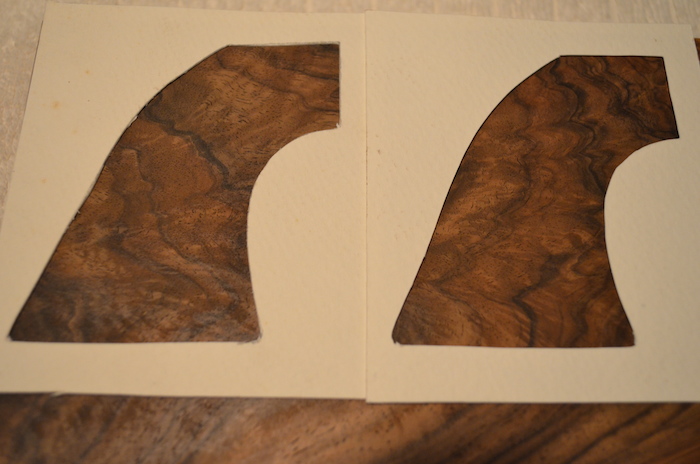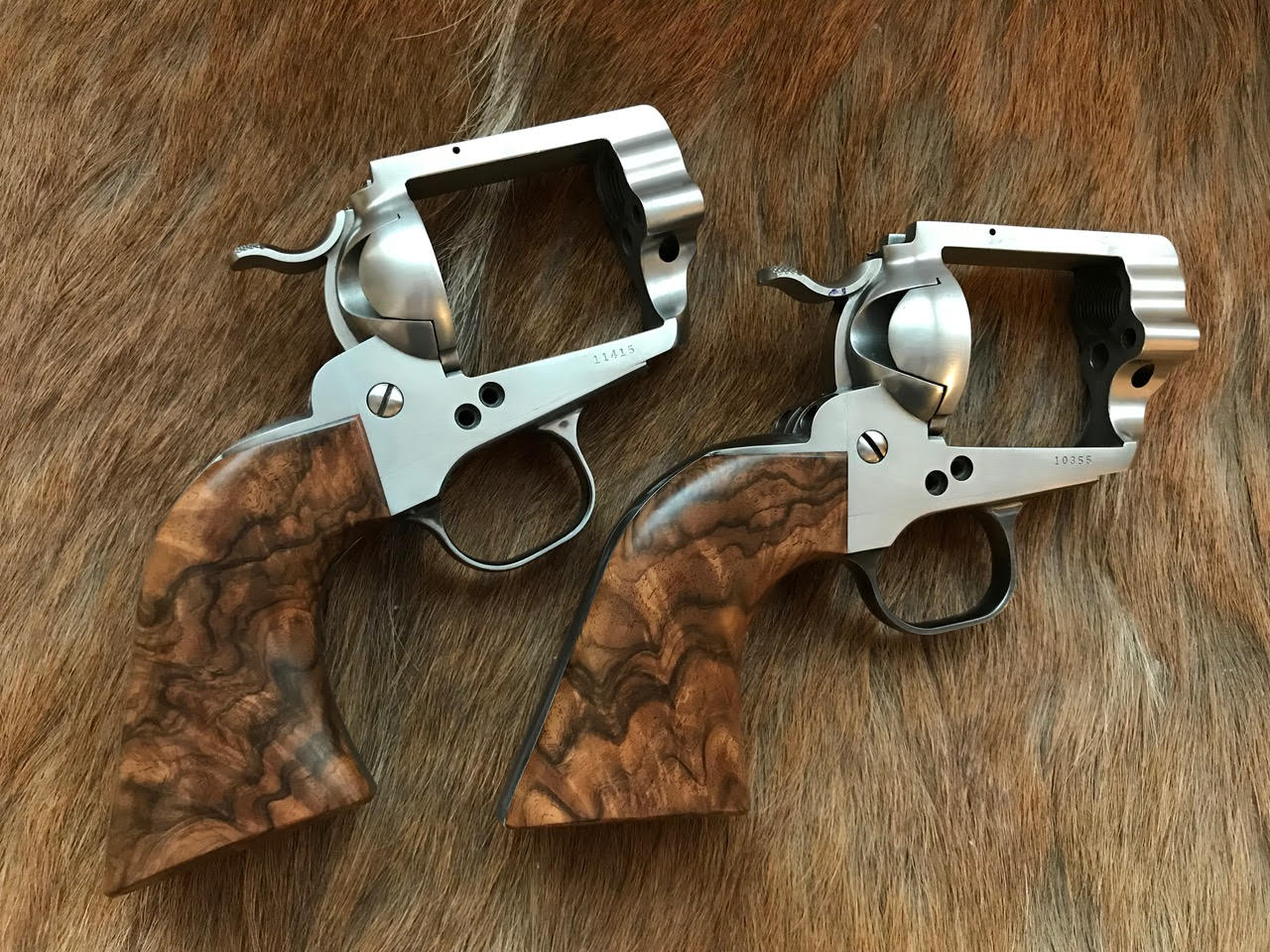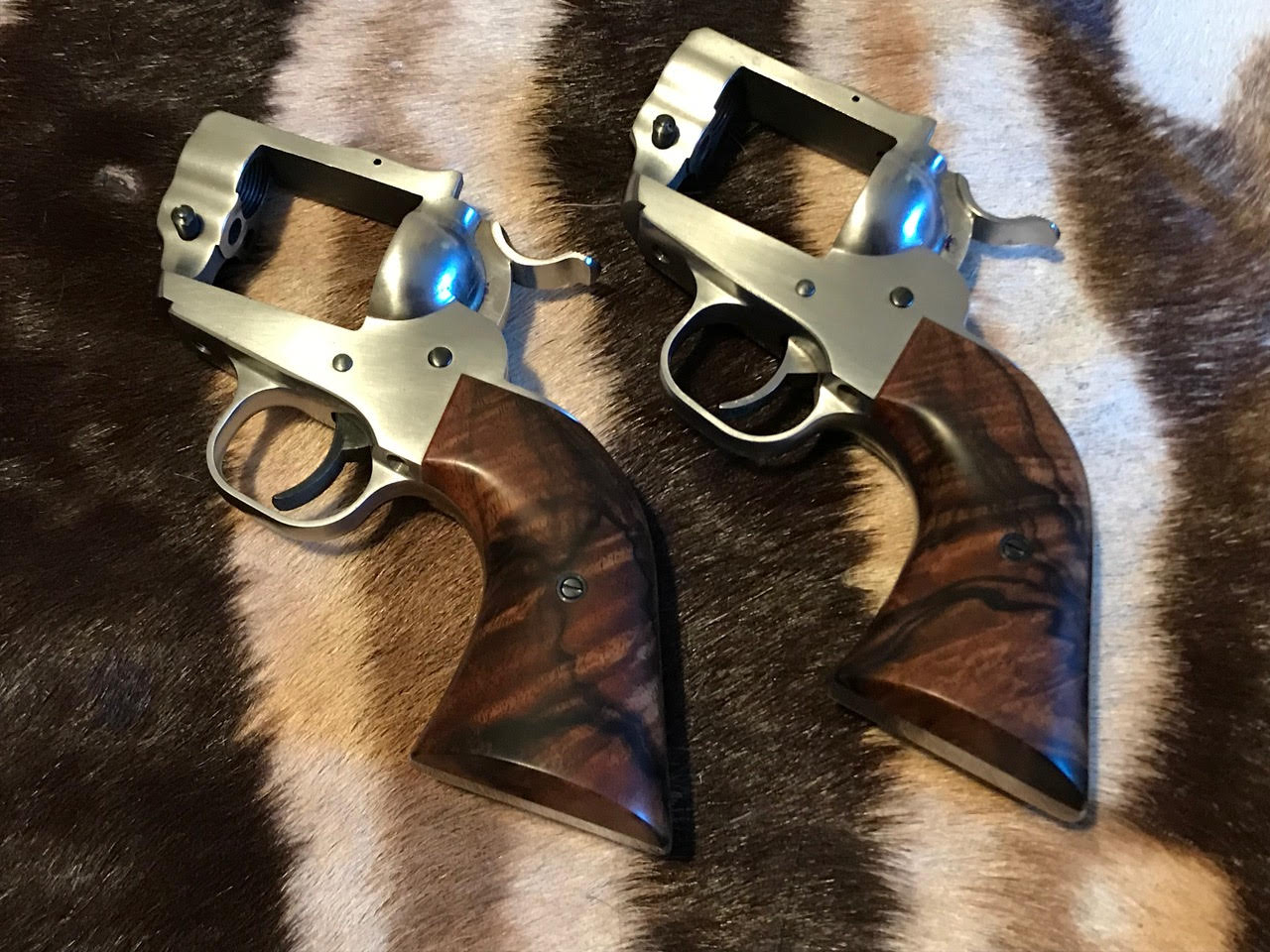Wood Varieties
Although with a little time it may be possible to source other types of wood, there are 5 types of walnut that I try to keep on hand: French, Turkish, Claro, Bastogne, and American Black Walnut.
Read below for a brief description of each of these and other woods.
French Walnut
Also called California English Walnut, this wood often has those highly sought dark, smokey black lines running randomly through it. The background color can range from light to dark, most of it being a nice medium shade. It often has warm brown, orange, or grayish tones accenting it. Nice feathered crotch figure is not uncommon.
The grain is usually close and fine, which cuts, files, and checkers well. This wood finishes beautifully and is a great choice for a set of custom handgun grips. It is my personal favorite. The blanks pictured below are intended to give a fair example of what French walnut often looks like.
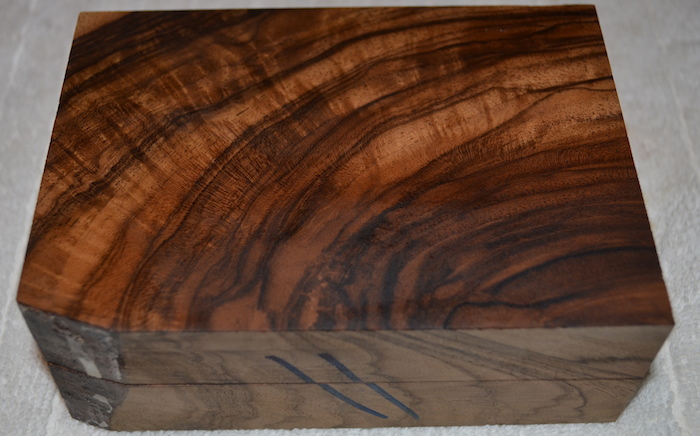
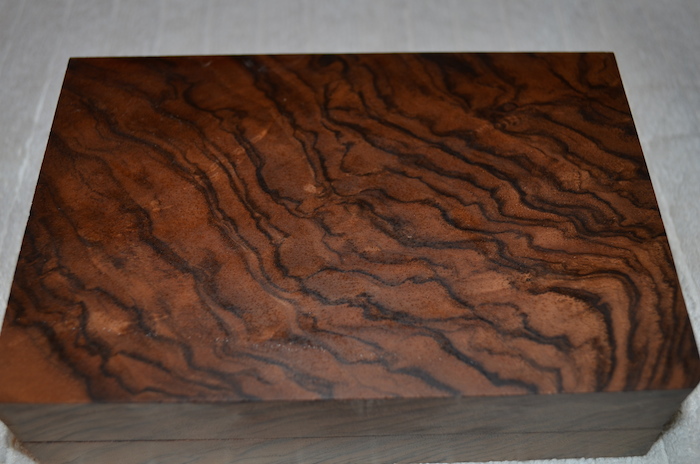
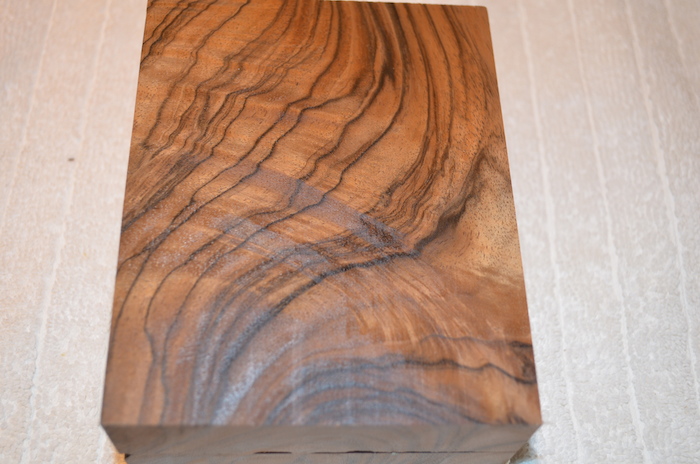


Claro Walnut
Claro Walnut has to be the king of color. Most Claro seems to be a medium to slightly darker color with multiple shades of brown, sometimes with orange, red, and chocolate accents. Beautiful feathered crotch and fiddle back figure are common. We also find nice pieces of a burl or random grain figure.
The grain is usually a bit more open with larger pores than the other woods but still finishes nicely. The following blanks are intended to give a fair example of what Claro can look like.

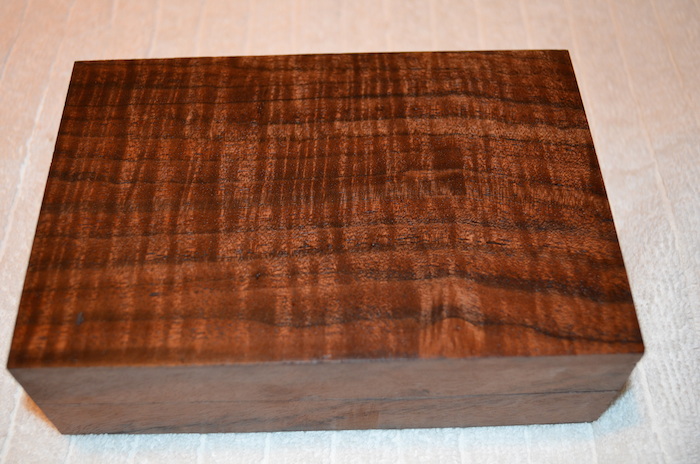
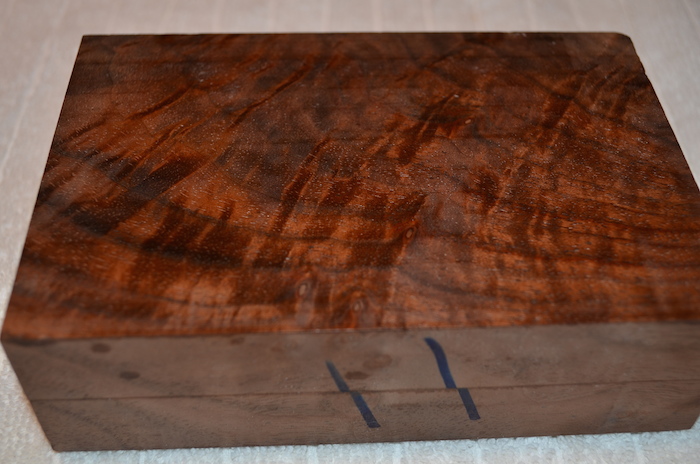
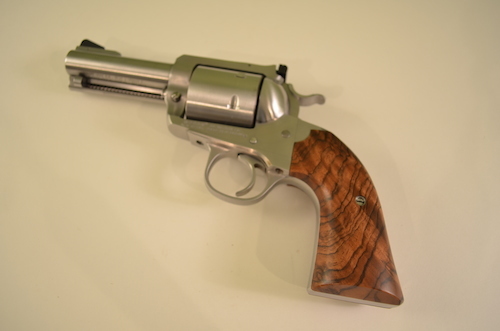
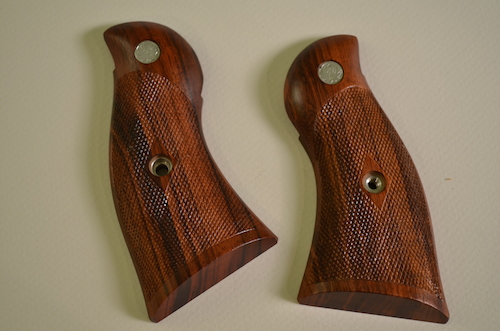
Black Walnut
Much of this wood will rival Claro for color, and often is a bit heavier and less porous. Black Walnut will finish very nicely. Below are some examples.



Bastogne Walnut
Bastogne is a cross between Claro and English Walnut. It sometimes has dark streaks similar to the English with some of Claro’s coloring. The wood usually seems more dense than Claro and will take a very nice finish. Examples of Bastogne below.
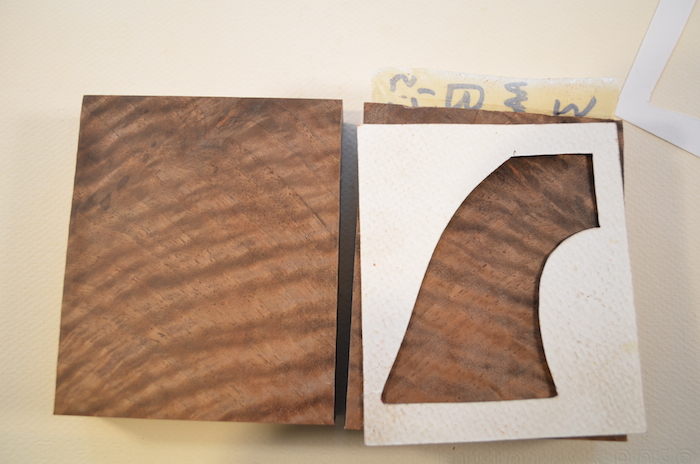

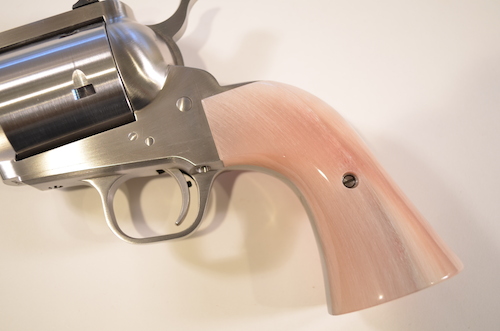
Circassian
This wood is from the Persian Gulf region. It is sometimes referred to as Old World Walnut. It often is harvested from trees that are hundreds of years old. Although I do not have an ongoing supply, I have been able to get some blanks of burl wood. Please note that with burl figure like this, there are sometimes a few small pin holes that need to be properly filled. Below are examples of Circassian wood.
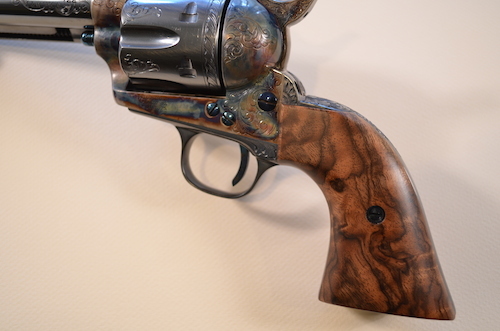
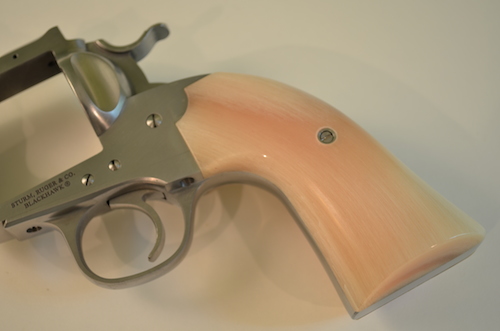
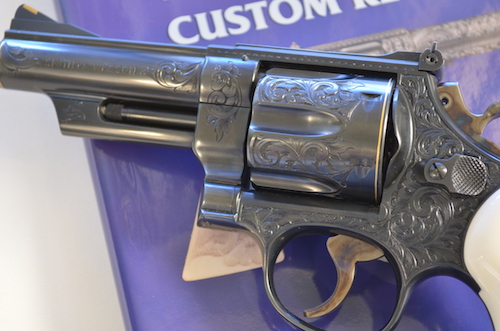
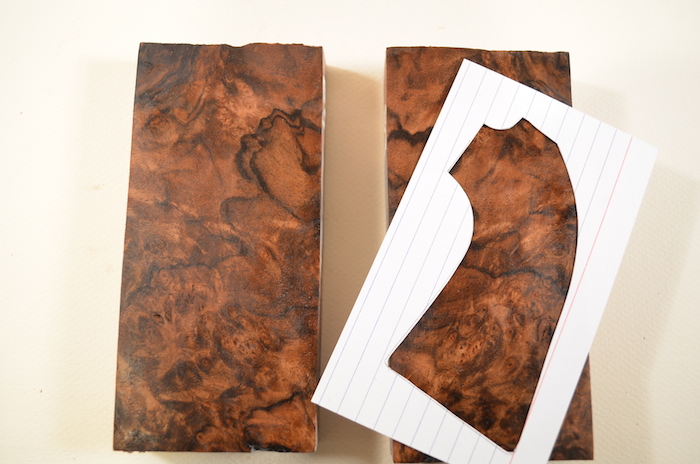
Turkish Walnut
Similar to Circassian, this walnut makes fine stocks. Most Turkish walnut has very nice black mineral streaks with good color. This is a fine choice when checkering is desired.
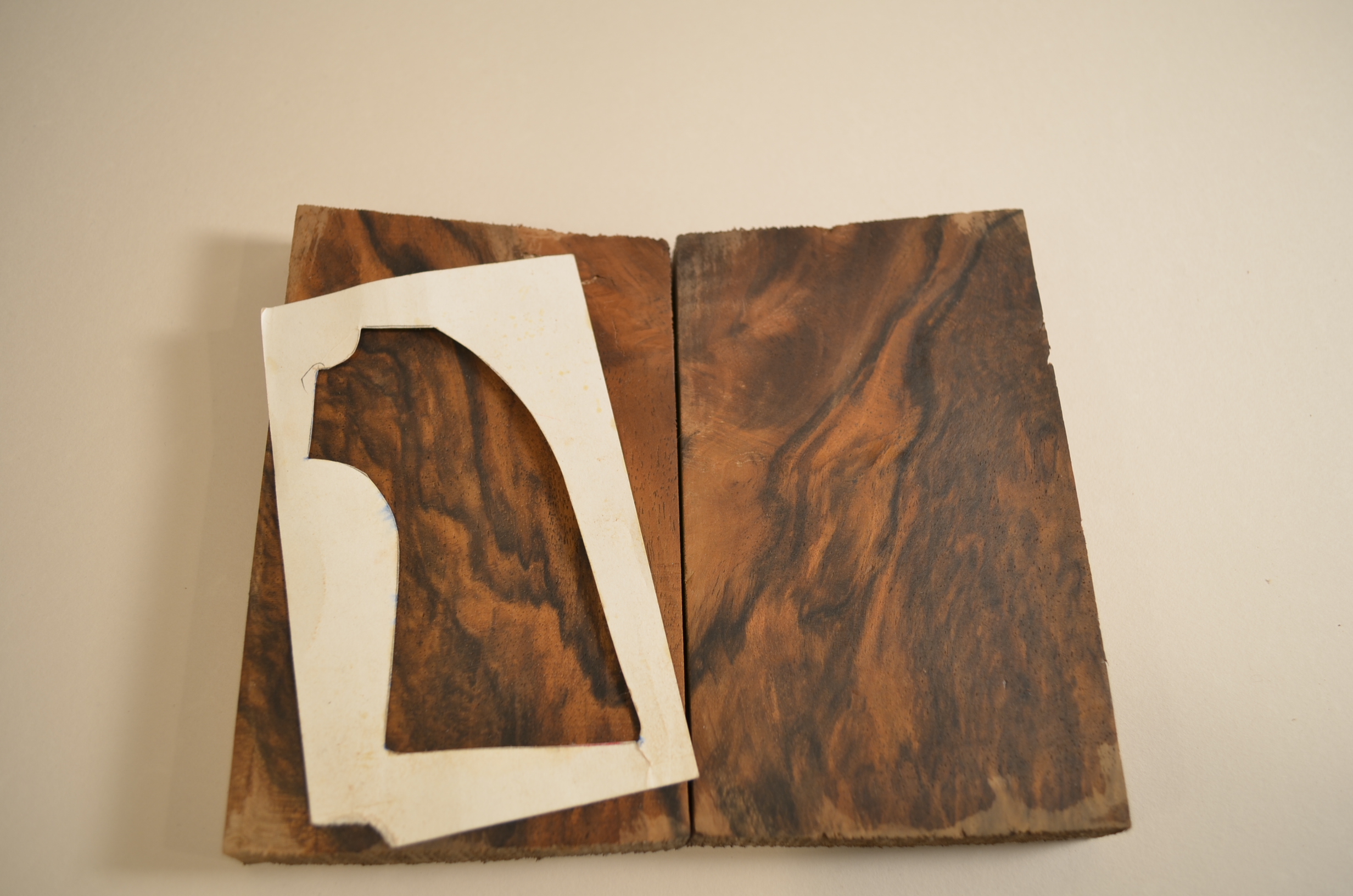
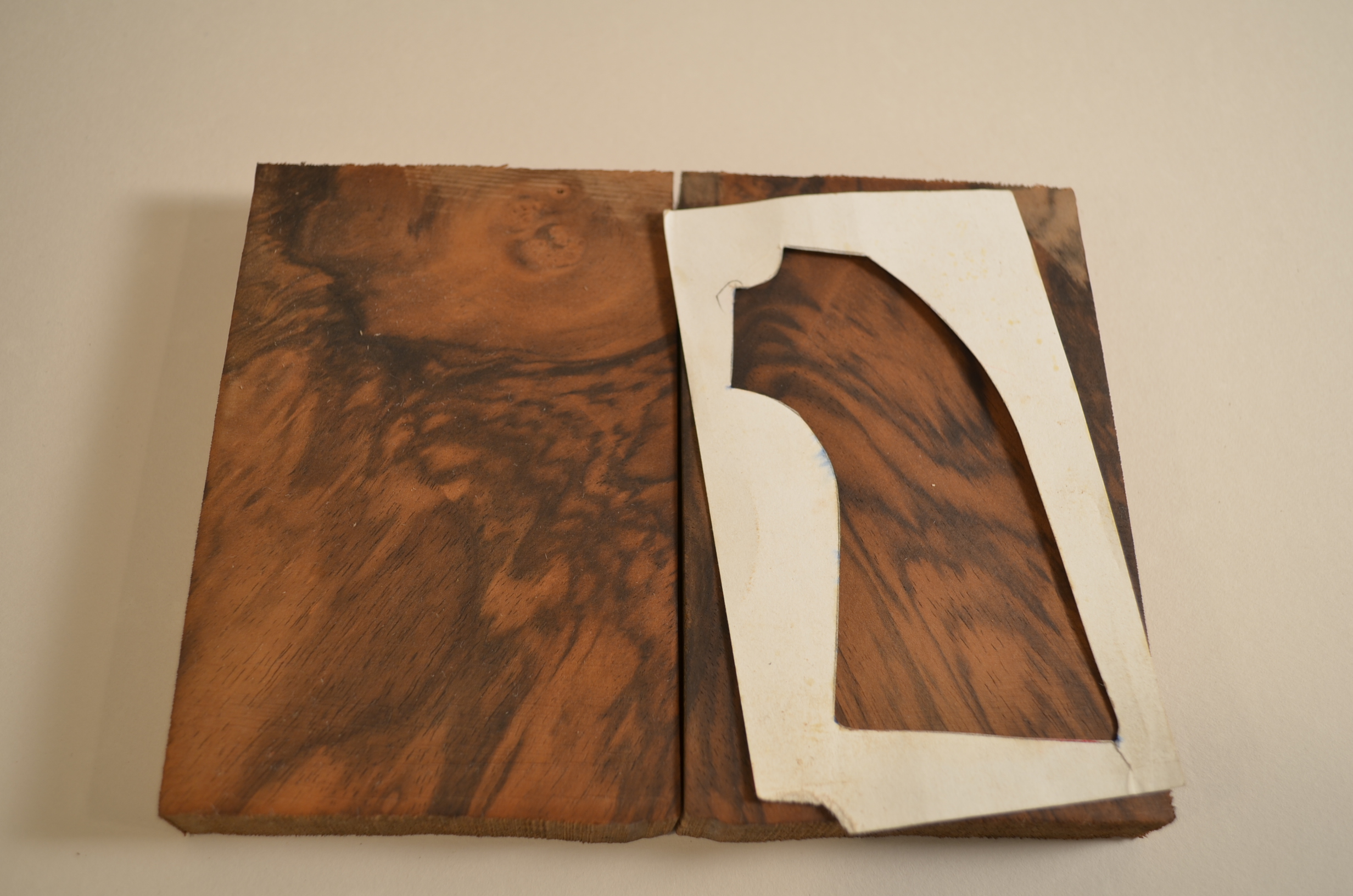
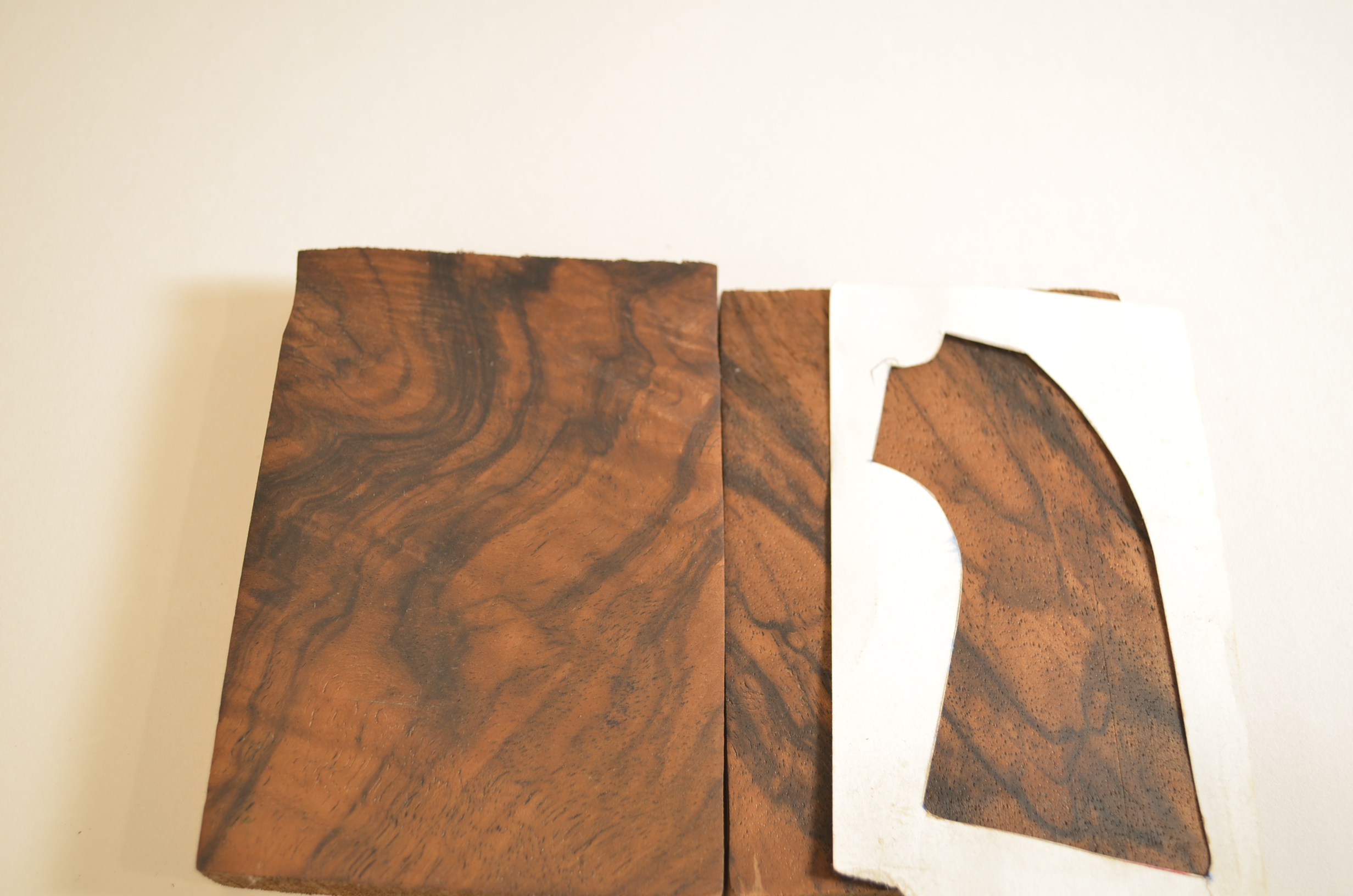
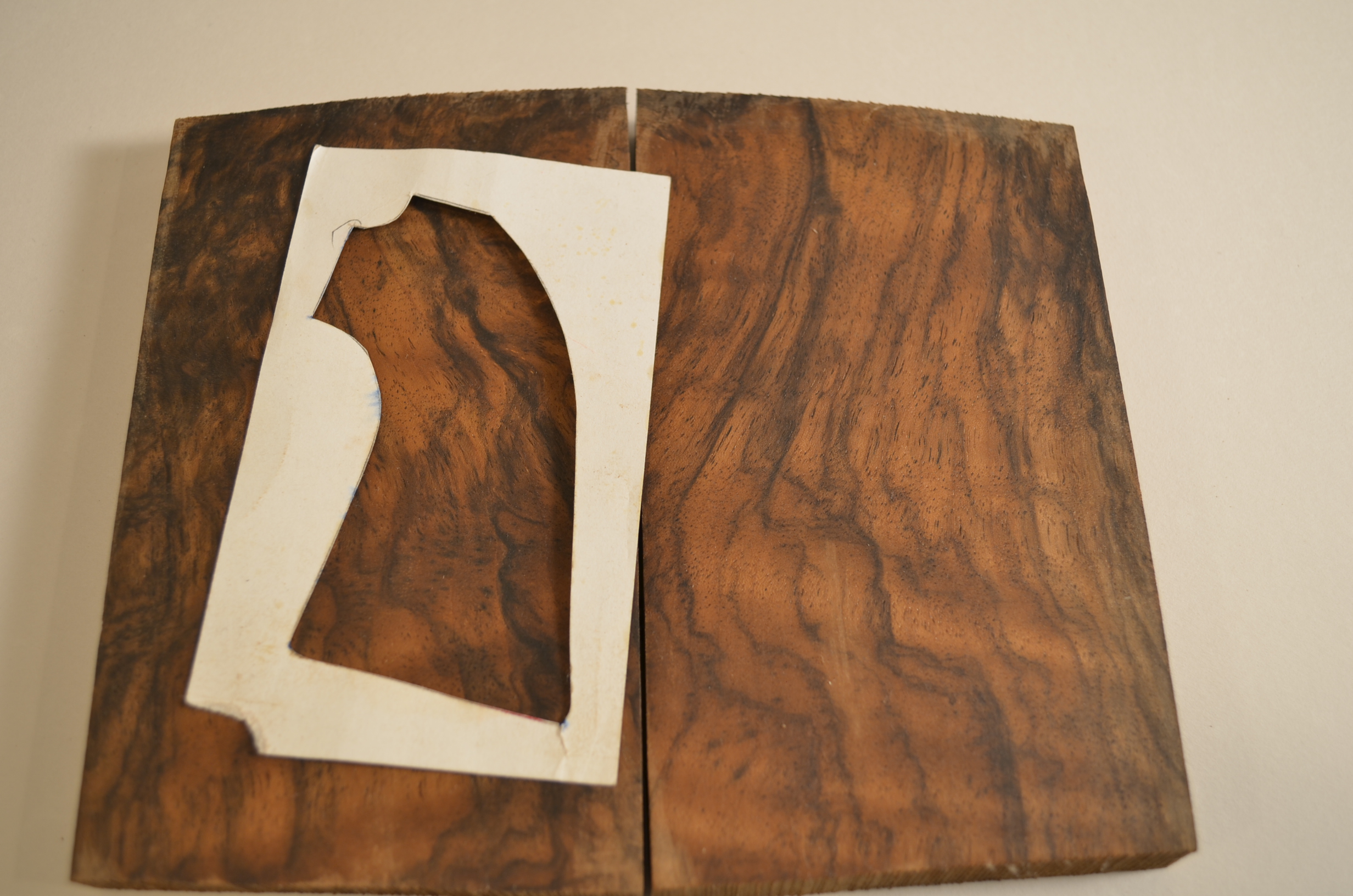
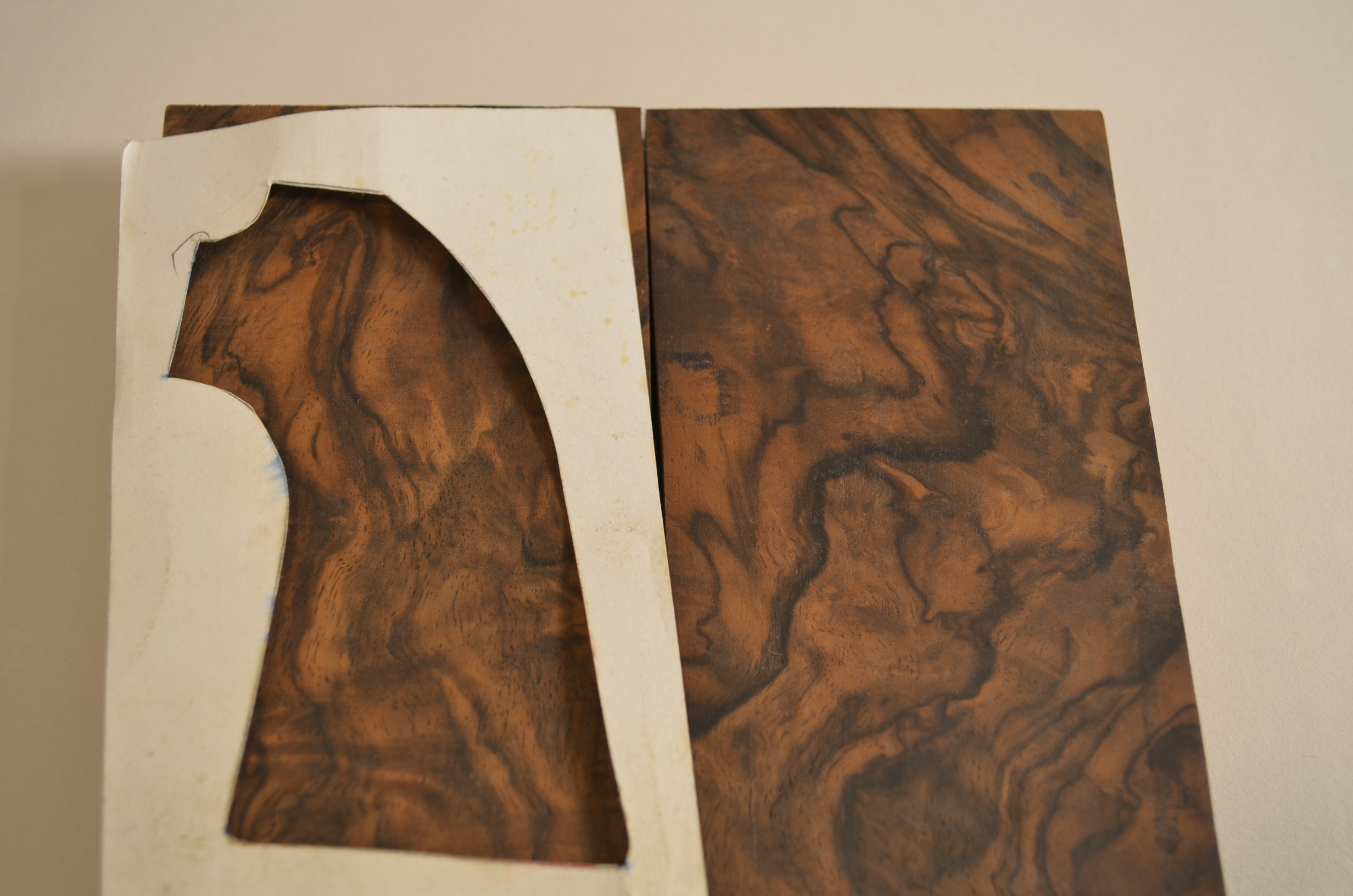
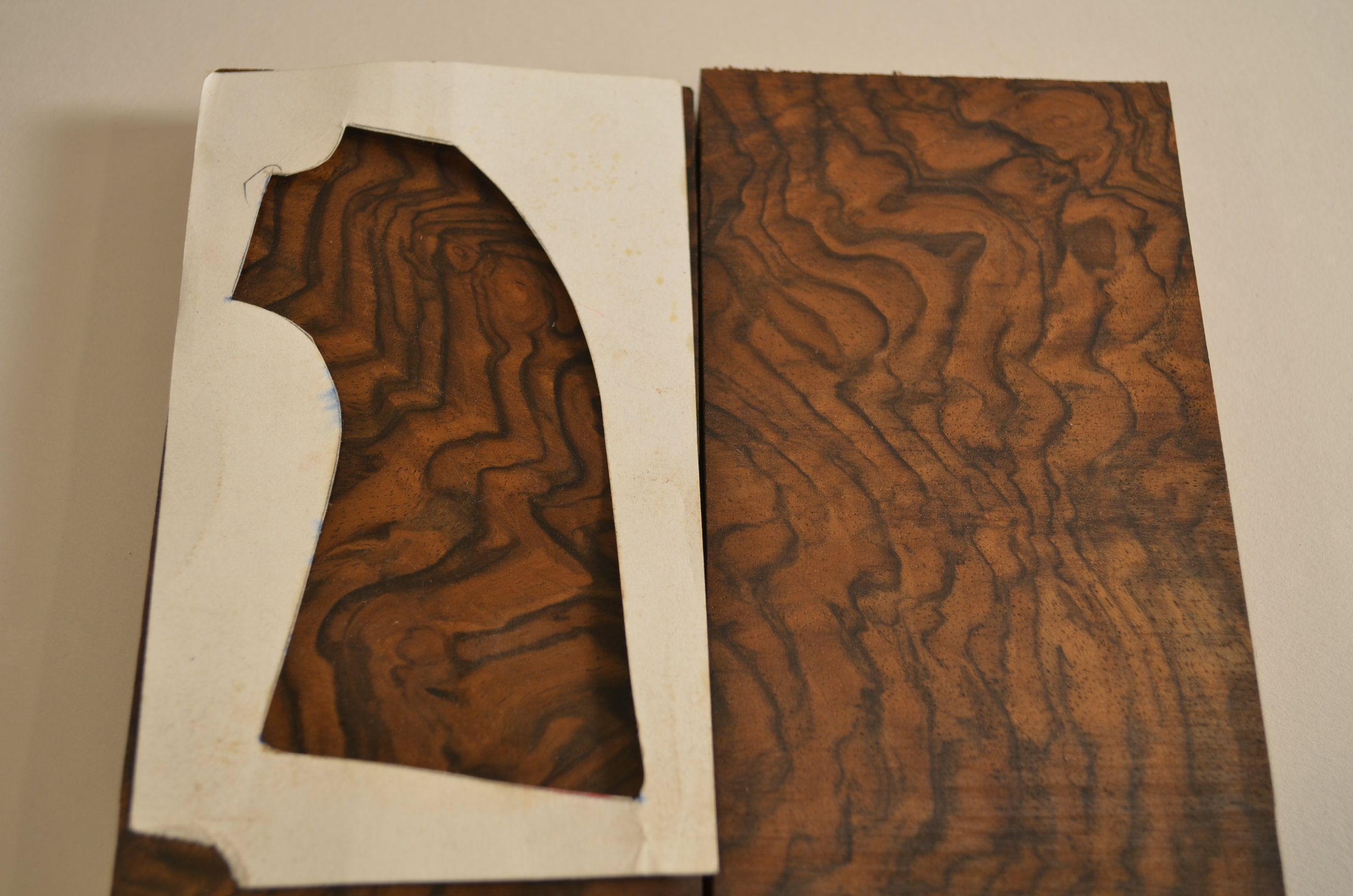
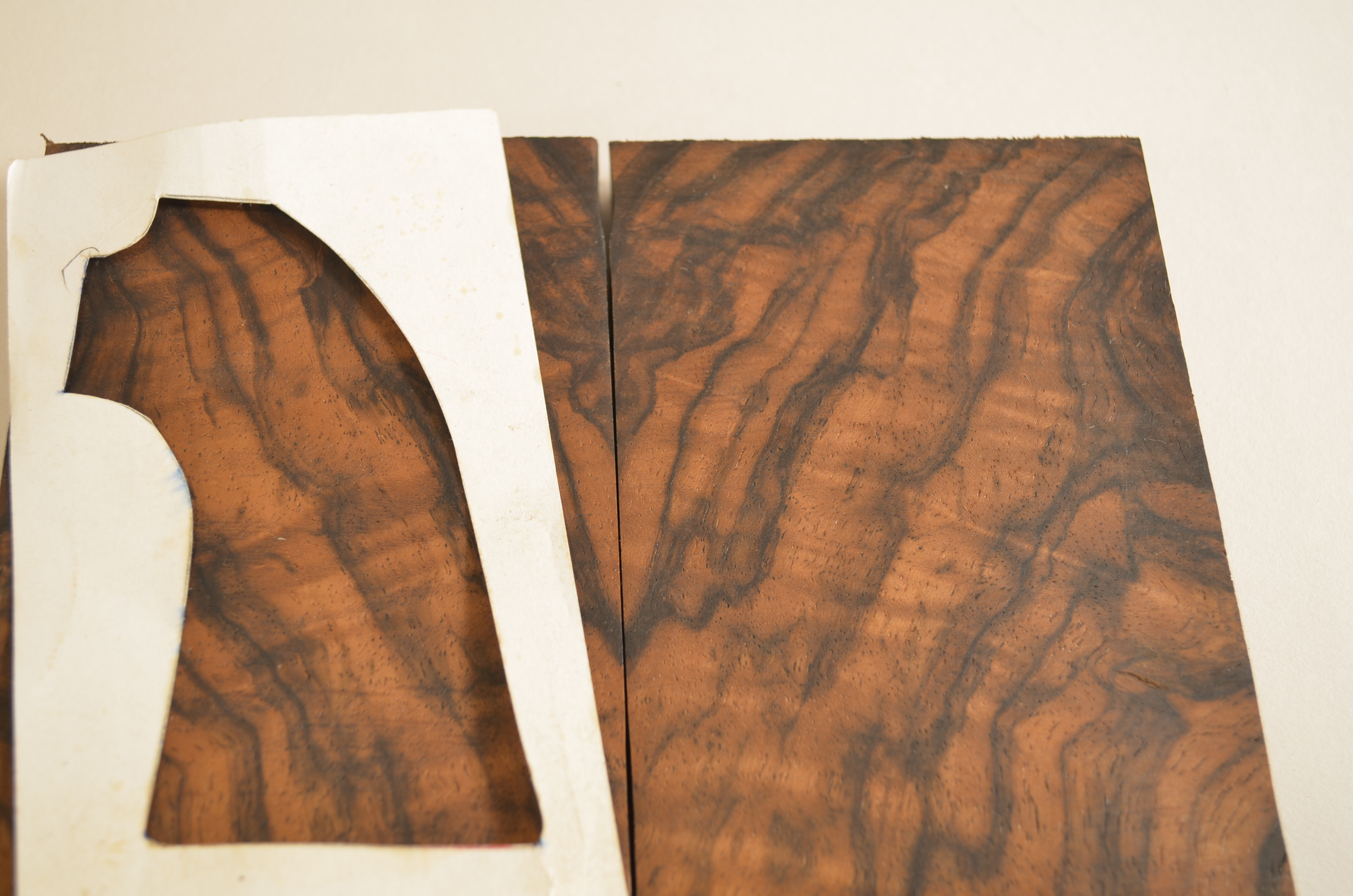
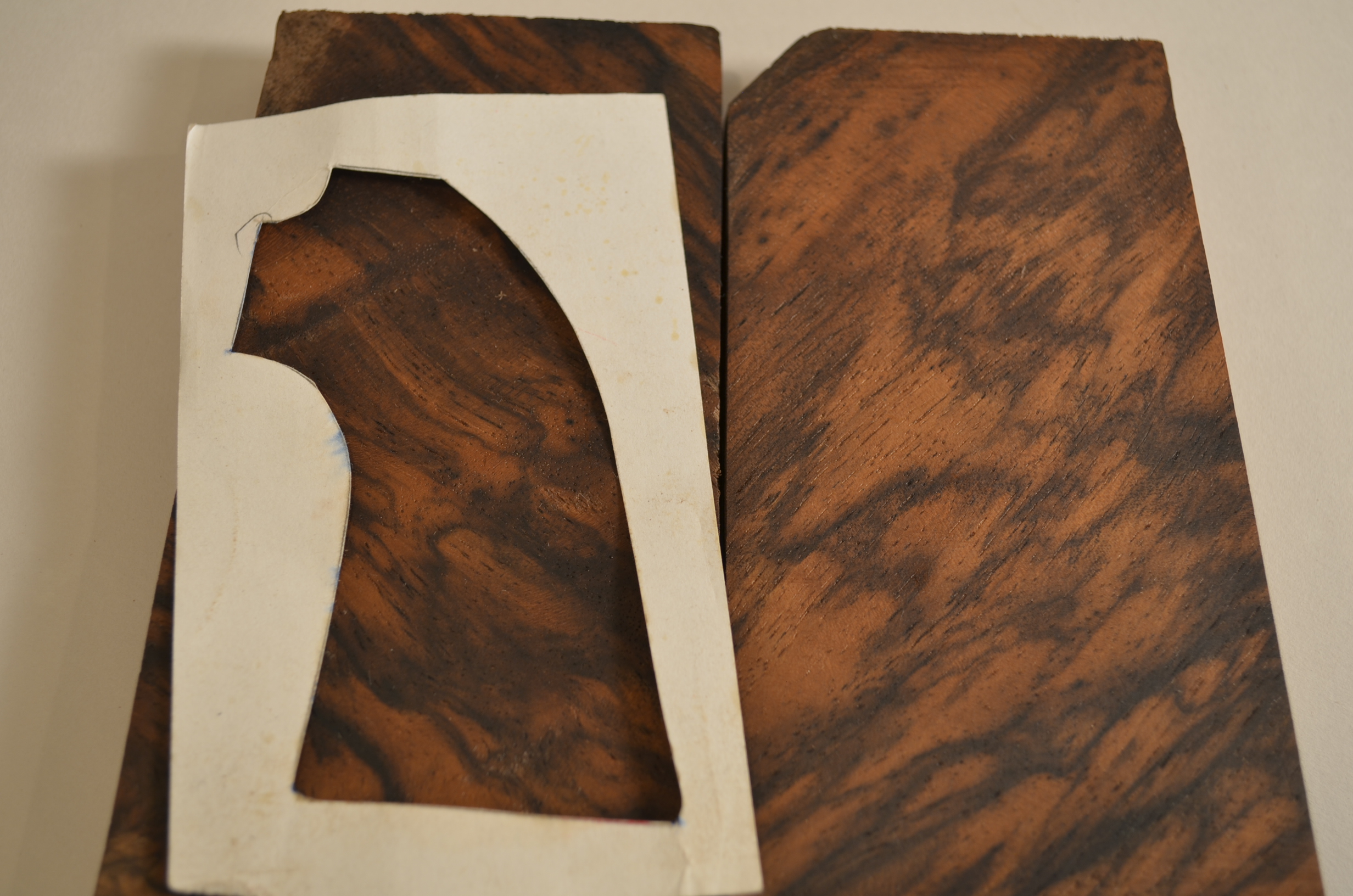
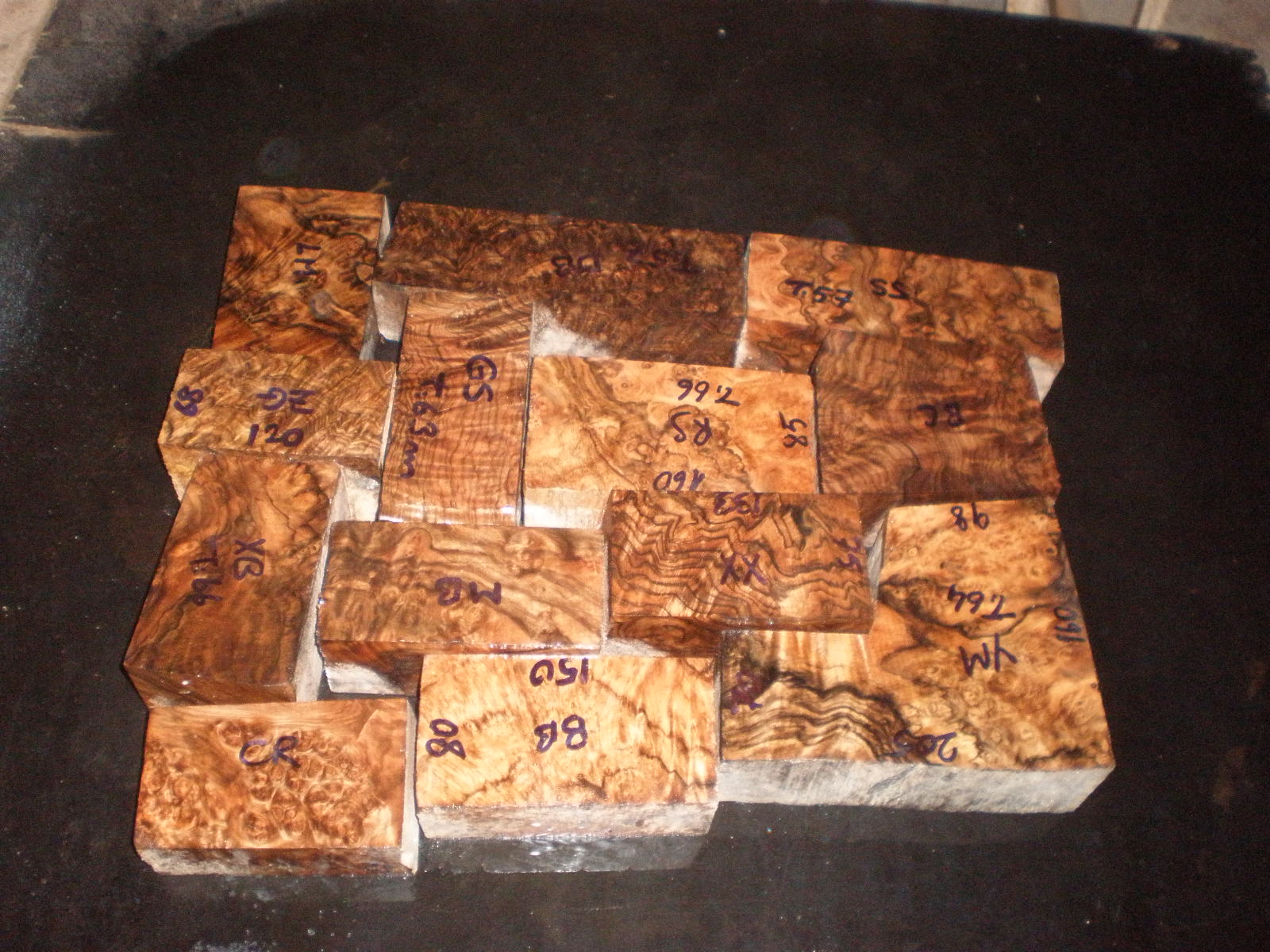
Exhibition
Much of the wood I get is graded exhibition from suppliers. The standard here at RCG is to grade this wood “AAA”. If the wood will not make a great set of custom handgun stocks, or if I would not want it on one of my own it won’t be offered as AAA. Sometimes there are blocks that stand out from and above the rest – these are graded exhibition.
What makes a blank exhibition can be rather subjective. It might be excellent coloring, grain flow, pattern density, even beauty on both sides, etc. Most of the time exhibition grade is a combination of these traits. These blanks will make exceptional and truly special sets of grips.
Below are examples of exhibition grade with notes as to why they are graded as such.
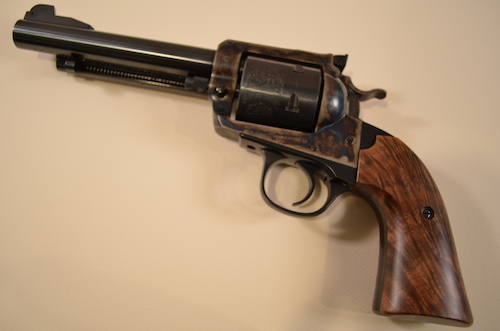
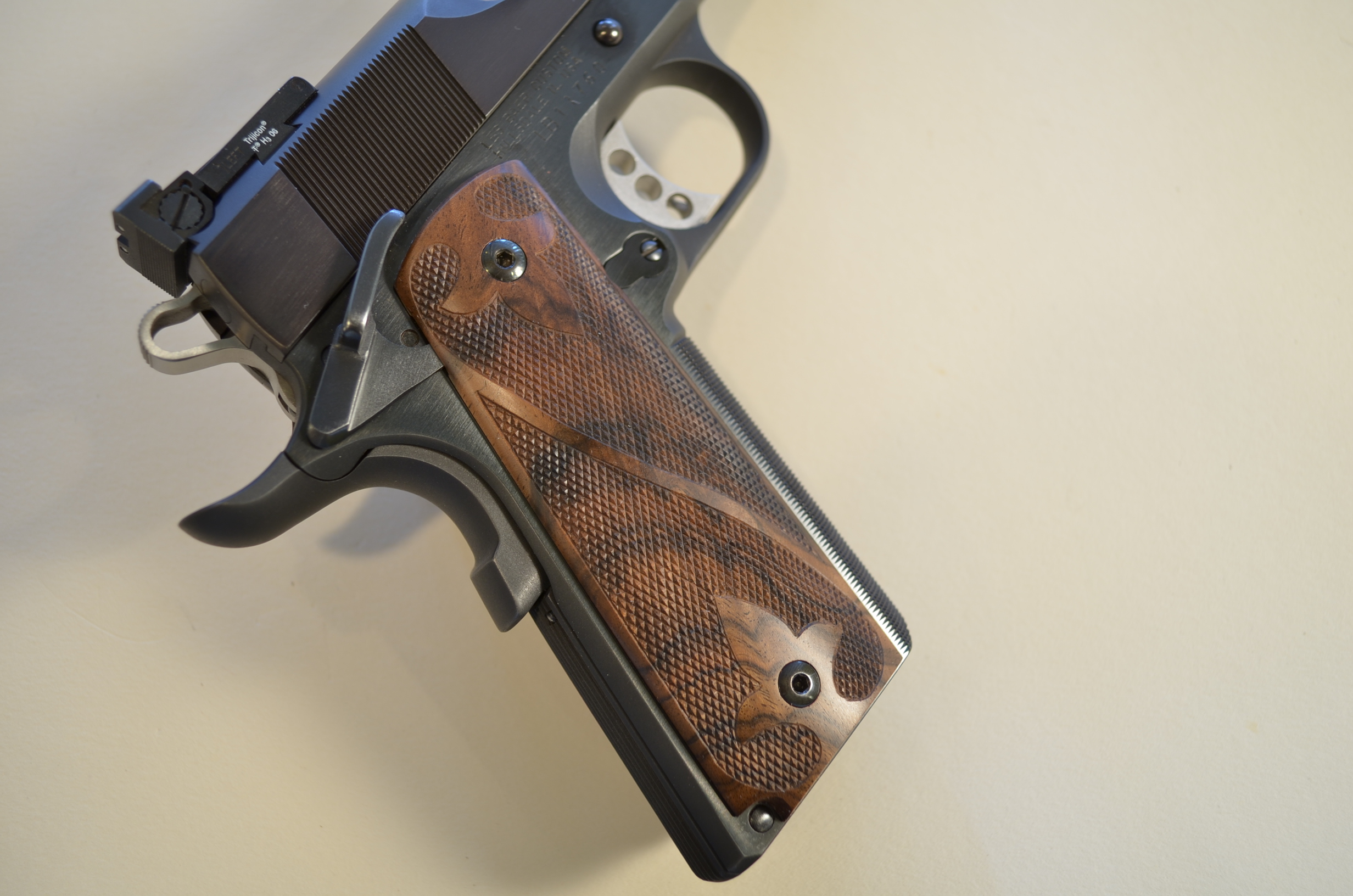
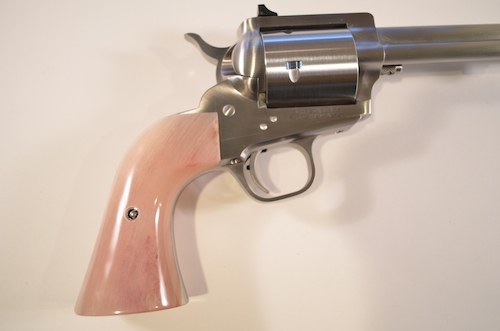
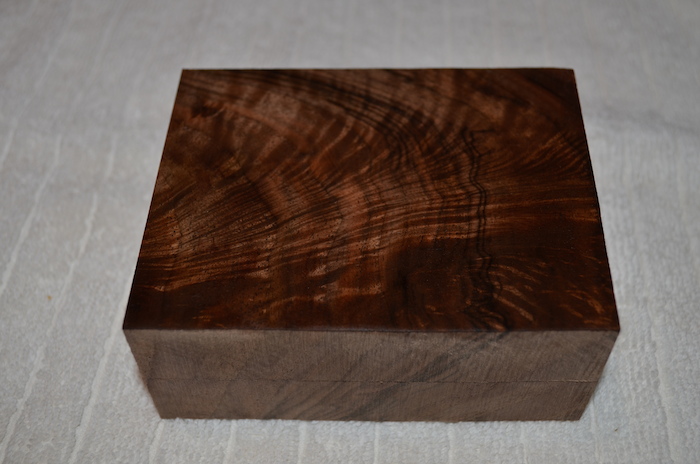
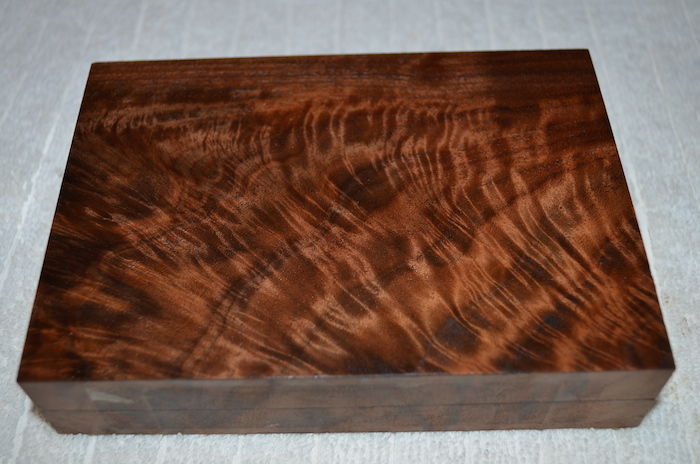
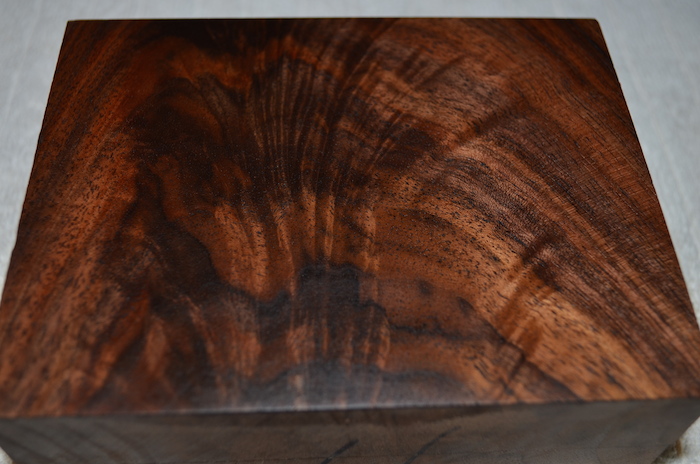
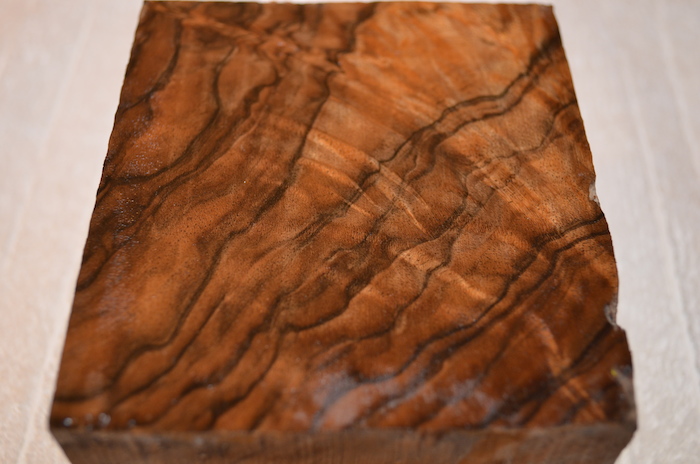
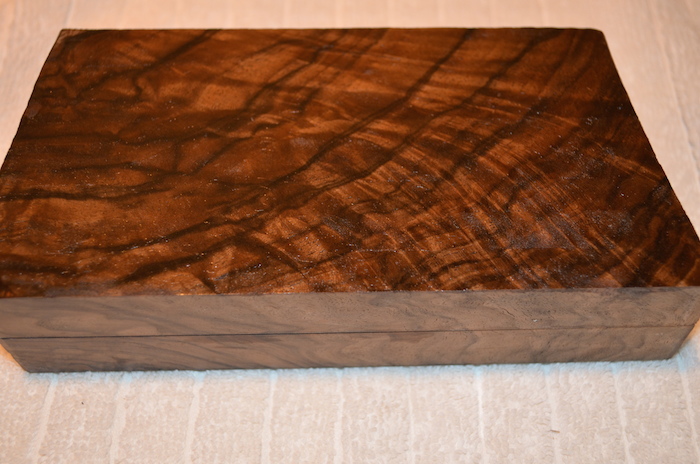
Stabilized
All of the wood I offer comes from suppliers who properly dry their wood. Properly dried wood is more stable and less likely to move. Although I have never run into problems, a natural material such as wood can not be guaranteed to never move, twist, split, shrink, or warp. If desired, any wood can be sent out to be professionally stabilized. While I cannot state that stabilized wood will never move, the chances of this happening are further reduced.
I try to keep a variety of stabilized woods on hand. This process adds about $30 to the blank.
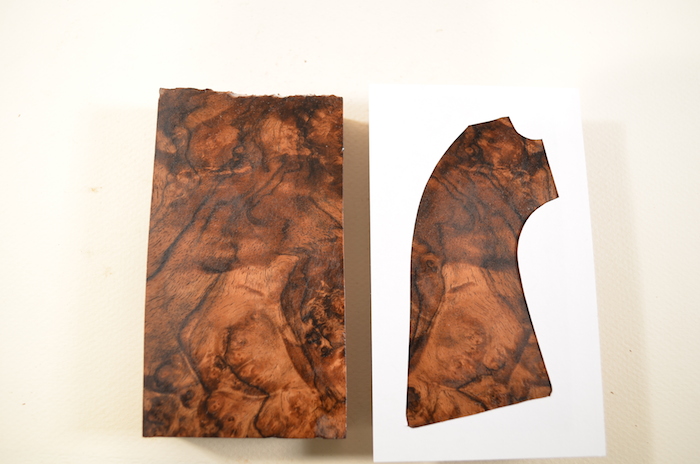
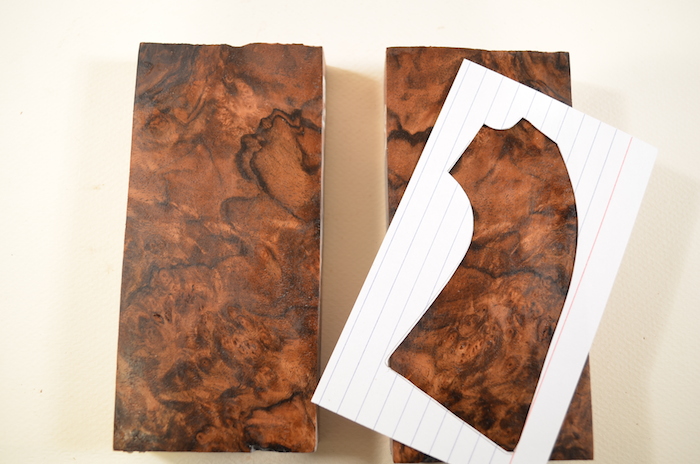
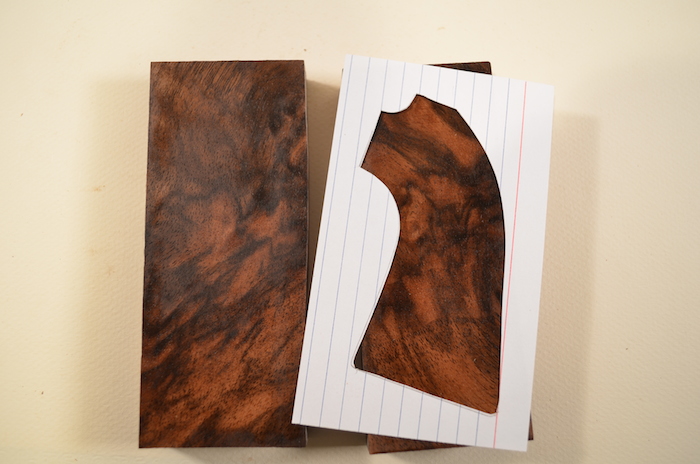
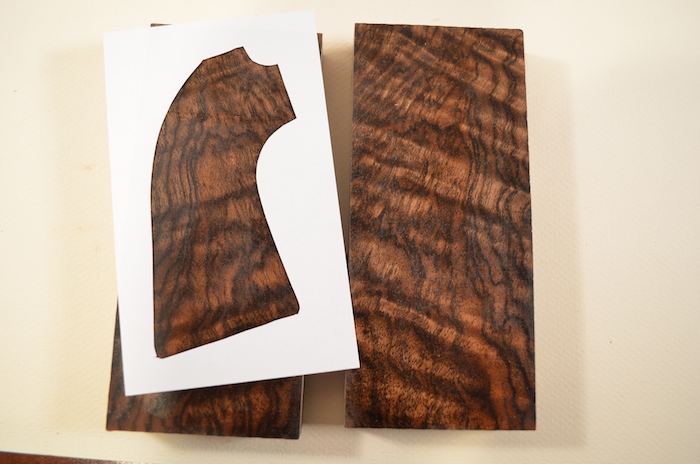
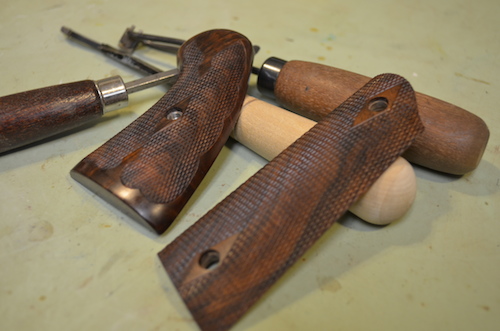

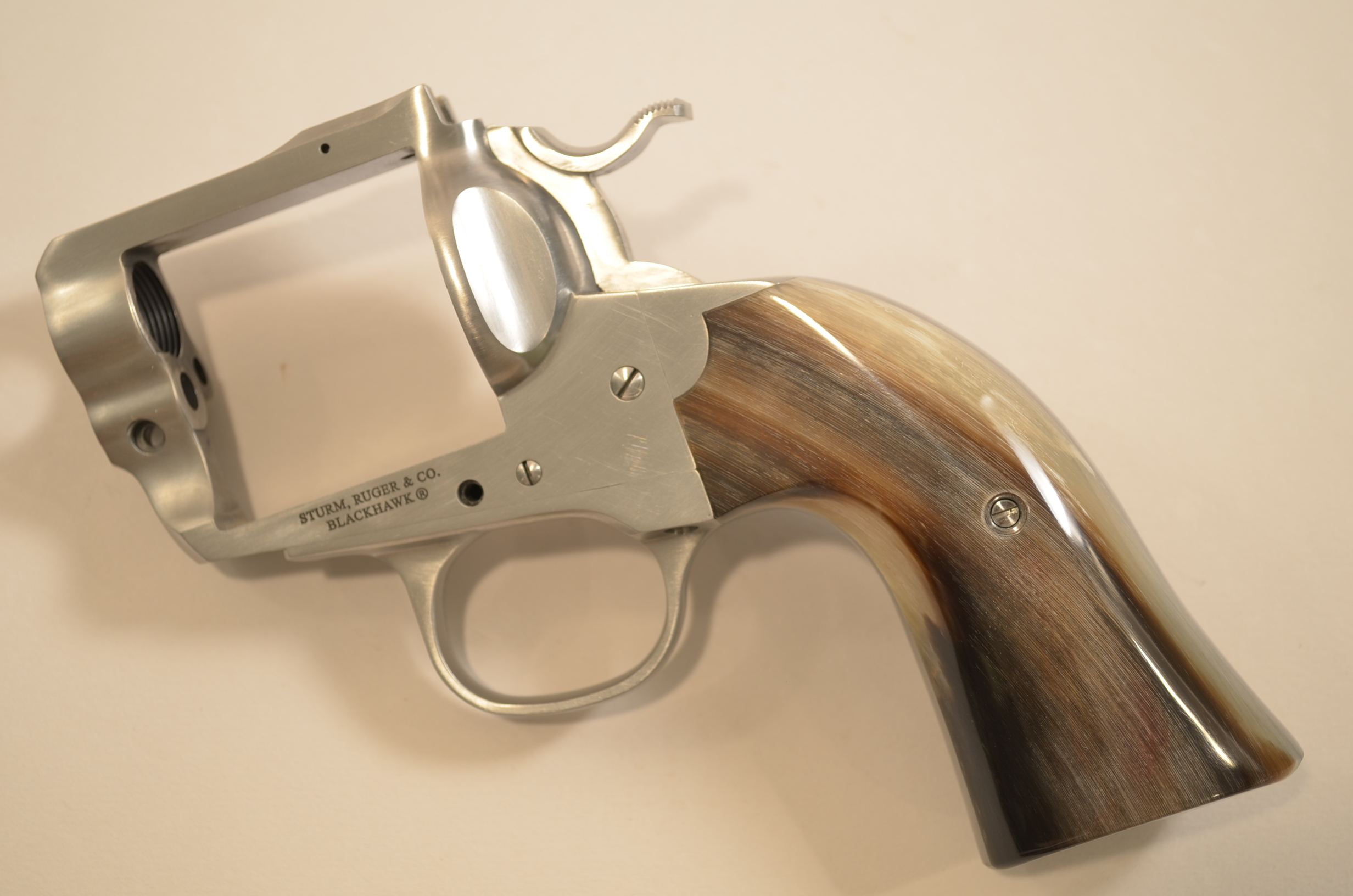
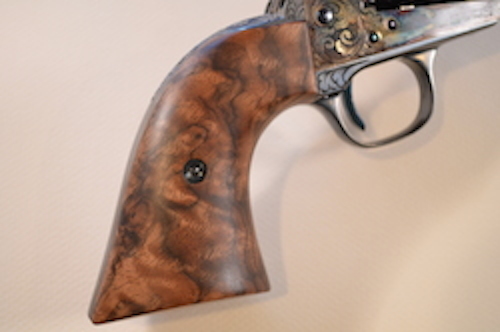
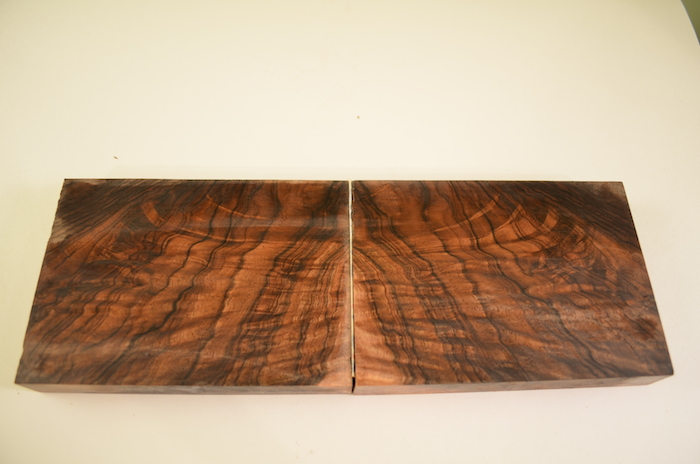
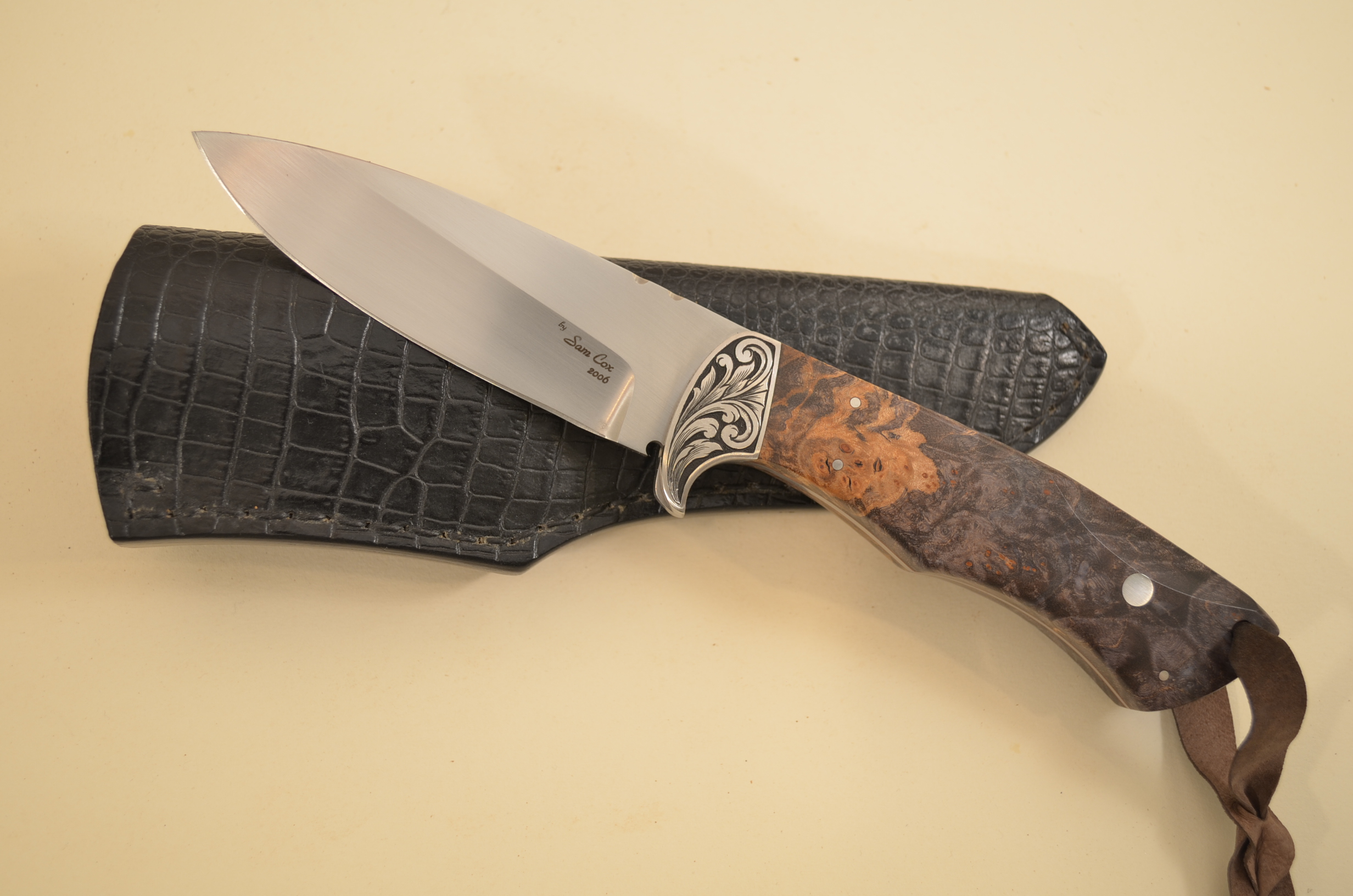
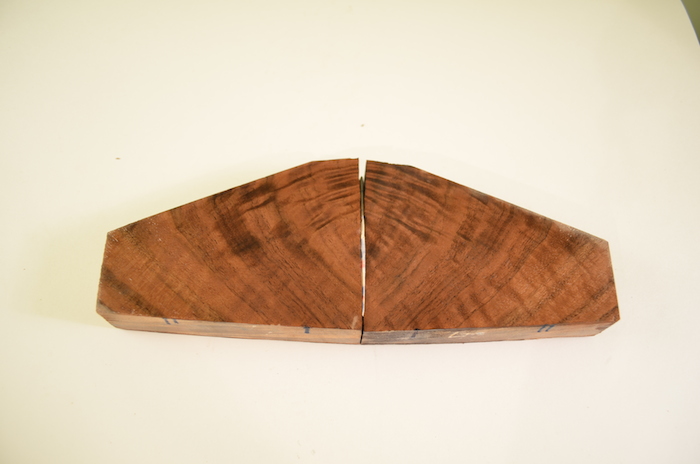
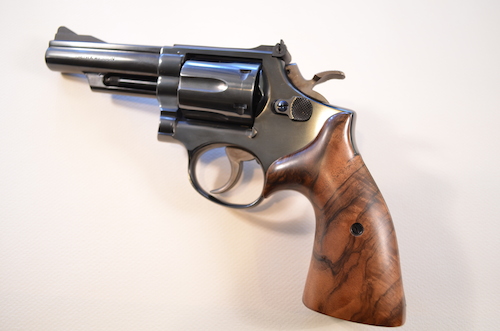
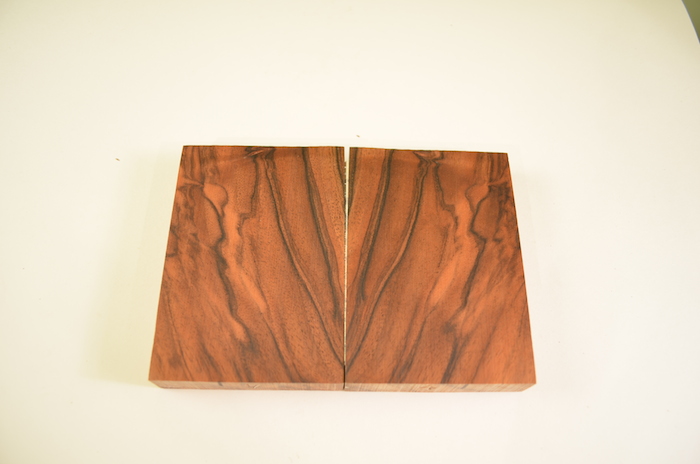
Pairs
I am often able to get blanks large enough to make a pair of handgun grips. What is more difficult is getting grain and color that work closely for a true pair. Examples below:
